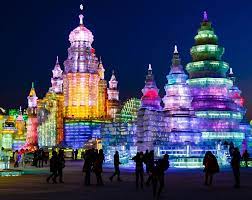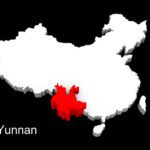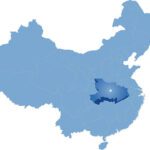
Families are the basic unit of society, and their well-being is essential for the overall development of a community or nation. This technical report provides an overview of family life in the Chinese province of Heilongjiang. Data for this report was obtained using open-sourced information, such as the National Bureau of Statistics of China.
The report’s main objective is to provide a concise overview of the conditional state of families using Heilongjiang family demographic statistics (e.g., number of families, family structure, racial and ethnic diversity, marriage rates, divorce rates, family income, etc.).
This report is written for stakeholders with an interest in family life in China, in this case, the Chinese province of Heilongjiang. This approach makes certain that the report’s findings are transparent and replicable, and stakeholders can access, verify, and utilize the data sources themselves.
Overview

Heilongjiang, China’s northernmost province, covers an area of 454,000 square kilometers and has a population of about 31.25 million. Heilongjiang Province has 12 prefecture-level cities, 21 county-level cities, and many municipal districts and counties.
Heilongjiang is the coldest province in China, with heavy snow. The snow season usually starts in early November and lasts for about 6 months until April the following year. The coldest months are January and February, when temperatures can drop to below -30 degrees Celsius (-22 degrees Fahrenheit). Harbin, the capital of Heilongjiang Province, is known as the “Ice City” of China because of its unique winter weather. It is a popular winter tourist destination for its beautiful ice and snow sculptures and hosts the world’s largest ice and snow festival each year.
The extreme cold weather in Heilongjiang can have a significant impact on family life, such as less participation in outdoor activities for children and the elderly, increased spending to heat homes and businesses, and an increased rate of illness and injury. However, the cold weather can also bring families closer together. Extended families may spend more time together indoors during the winter months. Additionally, the cold weather can provide opportunities for families to participate in winter sports and activities, such as ice skating, skiing, and building snowmen.
This report aims to provide an overview of the state of families in Heilongjiang province using official government data. The report covers various aspects of family life, including family size, family composition, ethnic and racial diversity, family income, poverty rates, employment rates, unemployment rates, education levels, marriage and divorce rates, etc.
Family Size and Composition
According to the Heilongjiang Statistical Yearbook 2021, the total number of families in Heilongjiang province was 13,024,687 in 2020. The number of households in Heilongjiang province was 28,934,500.
The average family size in Heilongjiang province was 2.22 individuals in 2020. The represented family structure in Heilongjiang is still largely traditional, with the nuclear family with an only child being the most common type of household. This consists of a married couple and their children and is often extended to include grandparents and other family members. However, with the increasing rate of urbanization in the last few decades, the majority of nuclear families now live in smaller apartments that are demographically distanced from extended families.
The rising divorce rate is a common phenomenon that potentially changes the family structure across provinces in China. In Heilongjiang, the divorce rate has increased from 2.8 per 1000 people in 2010 to 3.5 per 1000 people in 2020. This means that single-parent and single-parent households are more common in Heilongjiang.
The role of grandparents in child rearing in Heilongjiang requires urgent attention. In recent decades, parents have tended to explore working positions outside of the province due to limited job opportunities caused by the decline of traditional industries such as heavy industry and forestry. As parents are away working in other cities or provinces, the proportion of “grand-family” may increase as grandparents are the primary caregivers for their grandchildren.
Ethnic and Racial Diversity
The Han ethnic group makes up about 96.5% of the population in Heilongjiang Province, a border province with numerous and diverse ethnic groups. Nearly 2 million people identify as an ethnic minority, with Manchuria, Korea, and Mongolia leading the way.
Different national languages carry different cultural connotations. Judging from the overall situation in the province, Mongolian and Korean are relatively intact. Most Mongolian compatriots in Duerbot Mongolian Autonomous County, Zhaoyuan County, Qiqihar City, Fuyu County, Yi’an County, and other areas are proficient in it. The Korean language is well used in many Korean villages, such as the Mudanjiang area and the Korean villages in Ning’an City. The Oroqen language is mainly preserved in the two ethnic minority villages of Tahe and Huma. Although Manchu and Hezhen are already in an endangered state, it is undeniable that our province is the only area where these two languages are currently preserved.
The rich and colorful ethnic customs fully reflect the cultural diversity of Heilongjiang’s ethnic minorities. Food culture is an important part of national customs. The ethnic minorities who have lived in our province for many generations have their own traditional special foods (e.g., the Daur people’s vegetable porridge made from wild willow buds, the Oroqen people’s oily noodles, etc.).
Ethnic festivals are a concentrated expression of national customs. The Willow Bud Festival of the Daur people and the Wurigong Festival of the Hezhe people are held almost every year. The Liutou Festival of the Korean people has now become a local festival and an important tourism project. By practicing special cultural traditions and rituals, families from different ethnic groups hold diverse values that can somehow impact their family structures and functions.
Religion
Chinese folk religions, including Heilongjiang’s, are the predominant religions in Northeast China. This is a polytheistic religion that reflects the early human worship and belief in nature when the productivity level was not high, including both animal and plant worship and ancestor worship. A grand ceremony must be held during each sacrifice, forming a unique shamanic sacrifice ceremony, including lyrics, tunes, and strict procedures. The rituals of each ethnic group are slightly different, and the totems they worship are also not consistent. This primitive religion and related art forms constitute a major feature of the culture of northern ethnic minorities. This kind of ceremony remains in the Manchu, Oroqen, Hezhe, and other ethnic minority areas in Heilongjiang Province. Other religions in Heilongjiang Province include Buddhism, Taoism, Christianity (including Protestant Christianity, Catholicism, and Orthodox Christianity), and Islam.
Employment and Family Income
According to the Heilongjiang Provincial Bureau of Statistics, the employment rate in Heilongjiang in 2019 was 96.5%. The unemployment rate in Heilongjiang has dropped gradually, from 4.9% in 2002 to 3.2% in 2021, among urban areas. Regarding family income, the average annual disposable income per household among urban areas in Heilongjiang in 2019 was RMB 30,945 yuan (approximately USD 4,238), which was slightly higher than the average national household income (RMB 30,733 or USD 4,210). However, the number dropped greatly for households in rural areas to RMB 14,982 (i.e., approximately USD 2,053), which is less than half of the income from urban households. In addition, the province reported a lower employment rate among individuals from rural areas, possibly due to lower levels of education and limited job opportunities around the counties.
Education
Education is highly valued in China, and Heilongjiang is no exception. The average years of education of the population aged 15 and above in Heilongjiang province were 9.93 years in 2020, similar to the 9.91 years from the national average.
The province has many high-quality schools and universities, including Harbin Institute of Technology, Heilongjiang University, and Northeast Agricultural University. These universities are known for their high academic standards and their strong research programs.
Impacts of Urban Shrinkage in Heilongjiang Province
Urban shrinkage is a process in which a city experiences a significant and sustained decline in population. Urban shrinkage has become increasingly prevalent in the context of urbanization in many cities in Heilongjiang Province. Economic decline, demographic changes, and environmental factors are just a few of the causes of this.
Economic and Income Inequality
The major source of income in Heilongjiang province relies on heavy industry, which has declined in the last few decades. This has led to limited job opportunities and an increase in economic hardship for many families in this province. Average income in Heilongjiang province is relatively lower, while the unemployment rate is higher than the national average. Because of the economic downturn and lack of job opportunities in Heilongjiang, many locals have been able to find better jobs in more developed regions, leading to a significant decline in population.
Despite the declining poverty rate in Heilongjiang in recent years, the poverty rate remains relatively high, especially in rural areas. The Heilongjiang Statistical Yearbook 2021 shows the Gini coefficient in Heilongjiang is 0.399, higher than the national average of 0.384. This indicates that income inequality in Heilongjiang is greater than in China as a whole.
Environmental factors
Heilongjiang has a very cold climate, with long and harsh winters. This can make it difficult and expensive to live in the province. Additionally, the province is facing a number of environmental challenges, such as air pollution and water pollution.
Families in Heilongjiang province face a range of challenges that can have significant impacts on their well-being. This report aims to identify the most pressing challenges facing families in Heilongjiang province.
Aging Population
Heilongjiang Province is one of the most rapidly aging provinces in China. According to the 2021 Heilongjiang Province National Economic and Social Development Statistical Bulletin, the province’s birth rate is 3.59%, the death rate is 8.70%, and the natural population growth rate is -5.11%, which predicts a smaller size of the population in Heilongjiang over time. From 2011 to 2021, the population size of people aged 65 and over in Heilongjiang has increased from 8.5% to 16.8%. It is estimated that this age trend will continue to grow in the future, in line with the national trend.
As the population in Heilongjiang ages and people live longer, there is a growing need for both emotional and financial support for elderly care. In 2021, about 75% of seniors (aged 60 and over) in China suffered from non-communicable diseases such as cardiovascular disease, diabetes, and hypertension. With limited long-term care facilities available, many families in Heilongjiang are forced to take care of their elderly relatives at home. This can be a strain on families, especially households with children or working adults. The aging population is also putting a strain on social services and making it difficult to attract new businesses and residents.
A larger, aging population means a heavy need for healthcare. However, healthcare access and affordability remain a challenge for families in Heilongjiang province. In 2020, the number of doctors and nurses per 1,000 population in Heilongjiang province was 2.37 and 2.47, below the requirements of the government (2.5 and 3.14). While most provinces in China have a lower ratio of nurses to patients, it is a more serious problem for Heilongjiang with a growing elderly population regarding their health condition and the strain it puts on individuals whose family members are sick.
Education
In addition to healthcare-related sources, Heilongjiang faces concerned educational challenges. A shortage of teachers in rural areas is characterized by low salaries, poor working conditions, and higher dropout rates. In addition, limited vocational training programs in Heilongjiang may limit learning opportunities for students from rural areas with a lack of high-quality education. Altogether, this could limit the educational opportunities available to the young generation and their families in Heilongjiang, further predicting a lower income in the future.
Conclusion

Heilongjiang Province is a vibrant and diverse province with a rich ethnic culture. The province’s ethnic minorities have preserved their unique languages, customs, and festivals, contributing to the overall cultural diversity across families in Heilongjiang. The majority of households in Heilongjiang province are nuclear families, while grandparents step in and take on the main caregiving role as parents work far away from home. With the significant time grandparents spend with grandchildren, their care and support play a huge role in their grandchildren’s developmental outcomes (e.g., school achievement). Future research can further examine the influences of grandparents on children’s formation of values, identity, and personality.
In the process of urban shrinkage, families in Heilongjiang Province have faced a range of challenges, including income inequality, education, and healthcare. The Chinese government has implemented a range of programs to help families navigate these challenges, including poverty alleviation, education reform, and healthcare reform. Future research is necessary to comprehend the particular difficulties that families in Heilongjiang Province face. Most importantly, studying the cultural values and available resources for families in Heilongjiang will help us understand the process of coping when families experience crises.





